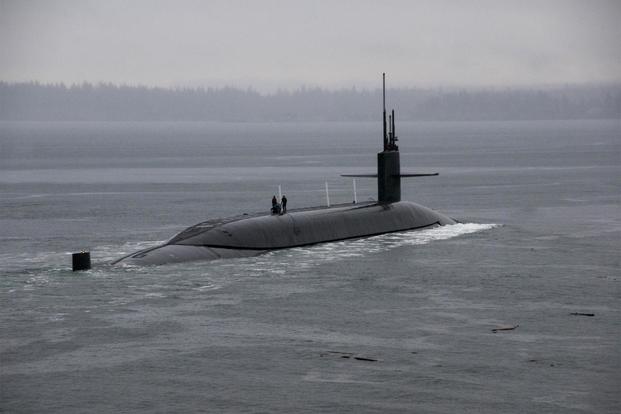As military officials continue to call for a space-based sensor layer capable of detecting and tracking ballistic or hypersonic missiles, leaders also hope existing signal and surveillance systems aren't neglected.
Testifying before the Senate Armed Services Committee on Tuesday, Air Force Gens. John Hyten, head of U.S. Strategic Command, and Terrence O'Shaughnessy, head of U.S. Northern Command and North American Aerospace Defense Command, said the Navy's sea radars will be needed to thwart missiles headed for the United States.
"We need to go and invest ourselves and our ability to have, first, the domain awareness," O'Shaughnessy said. "Right now, we need to invest in the IUSS. IUSS, which is our Integrated Undersea Surveillance System, which is atrophied as it relates to the continental U.S. and our ability to defend there."
The technology dates back to the 1950s, when it was used to track submarines and collect "acoustic and hydrographic information" for antisubmarine warfare, according to the Navy. It was included in later technology, including the Sound Surveillance System (SOSUS), parts of which are slated to receive upgrades.
Related content:
- US, Canada Eye Ways to Counter Cruise Missile Attacks
- Trump's Missile Defense Review Calls for Space Sensors, Drone Lasers
- StratCom Chief Worries Amid Claims of 'Unstoppable' Russian Missile
IUSS, for example, offers an extra layer of protection as parts of the U.S. lack radars, the generals said.
During the period when tensions between the U.S. and Russia relaxed, radars at Robins Air Force Base, Georgia, and Eldorado Air Force Station, Texas, were dismantled, leaving the southern coast vulnerable, Hyten said.
"So we have no radars that look south," he said. "We have built radars, and we're building a radar in Hawaii, built a radar in Alaska to defend against the Korean threat, in particular, to make sure we can enable [NORAD's] missile defense."
Last year, Russian President Vladimir Putin claimed his country had developed "invincible" new nuclear weapons, including hypersonic missiles, capable of penetrating U.S. defenses. An animated video portrayed a Russian intercontinental ballistic missile striking Florida.
Hyten said the U.S. must turn to space to help fill the gap where no ground or sea radar infrastructure exists.
"There's not enough islands in the world to build a radar to defend every avenue. Therefore, we have to go to space. And we can go to space now in an affordable way with distributed constellations that can look down and characterize that threat in a global perspective, so we can see them wherever they come from," he said.
Defense Department officials have long touted the use of space-based sensors to monitor missile launches. The Pentagon wants to track missile launches in their boost phase "from locations almost anywhere on the globe," according to the 2019 Missile Defense Review.
The sensors "enjoy a measure of flexibility of movement that is unimpeded by the constraints that geographic limitations impose on terrestrial sensors, and can provide 'birth to death' tracking that is extremely advantageous," the review states.
Last month, President Donald Trump said the Pentagon's 2020 budget proposal will include a space-based missile defense layer.
During a congressional hearing last year, Hyten sent mixed signals on whether the U.S. could defend against a missile attack. He warned lawmakers the U.S. isn't completely prepared to stave off Russia's hypersonic missile technologies.
On Tuesday, he said that simply being a nuclear power should repel such moves.
"Our defense against hypersonics is our nuclear deterrent. If somebody attacks us with a nuclear hypersonic capability, we have the ability to respond," he said.
Hyten added, "But … we need to build sensors to be able to understand exactly where those things are going so we can better defend ourselves. You can't defend yourself if you can't see it."
-- Oriana Pawlyk can be reached at oriana.pawlyk@military.com. Follow her on Twitter at @Oriana0214.










